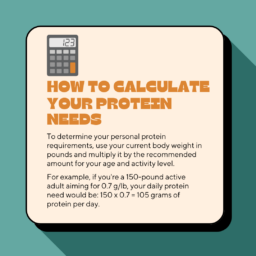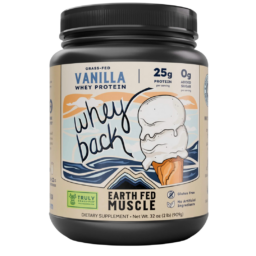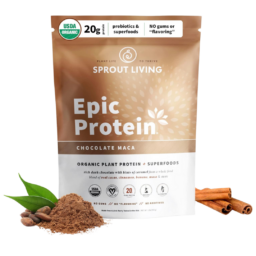
You learned it in your first biology class and have probably heard it a thousand times since—protein is a crucial macronutrient that plays a vital role in our overall health and well-being. From building and repairing tissues to supporting immune function, protein is essential for people of all ages and fitness levels. In this article, we’ll help you piece together the protein puzzle, exploring optimal intake for different life stages and fitness goals and delving into the world of protein quality and sources.
The Importance of Protein
Protein is often called the building block of life, and for good reason. It’s involved in numerous bodily functions, including:
- Muscle growth and repair
- Enzyme, hormone, and neurotransmitter production
- Immune system support
- Maintaining healthy skin, hair, and nails
- Transporting nutrients throughout the body
Getting enough high-quality protein in your diet is not only crucial for overall health but can significantly impact your fitness goals—whether you’re looking to build muscle, lose weight, or maintain your current physique.
Protein Needs Across Different Ages and Stages
- Youth (Ages 4-13): Children need protein for proper growth and development. The recommended dietary allowance (RDA) for protein in this age group is:
- Ages 4-8: 0.43 g/lb of body weight
- Ages 9-13: 0.43 g/lb of body weight
Ensure children get a variety of protein sources, including lean meats, dairy, eggs, and plant-based options like beans and nuts.
- Teens and Young Adults (Ages 14-30): During adolescence and early adulthood, protein needs increase to support rapid growth and development:
- Ages 14-18: 0.39 g/lb of body weight
- Ages 19-30: 0.36 g/lb of body weight
Athletes and those engaging in regular, intense exercise may need more protein to support muscle growth and recovery.
- Pregnancy: Pregnant women require additional protein to support fetal growth and maternal tissue expansion. The recommended intake is:
- First trimester: Add 1 g of protein per day to pre-pregnancy needs
- Second trimester: Add 10 g of protein per day
- Third trimester: Add 31 g of protein per day
Focus on high-quality protein sources like lean meats, fish, eggs, dairy products, beans, peas, lentils, nuts, and seeds—organic whenever possible!
- Middle Age (Ages 31-50): For most adults in this age range, the RDA for protein remains at 0.8 g/kg (0.36 g/lb) of body weight. However, individuals engaging in regular exercise or looking to maintain muscle mass may benefit from higher intakes, ranging from 1.2-2.0 g/kg (0.54 – 0.9 g/lb) of body weight.
- Older Adults (Ages 51+): As we age, our bodies become less efficient at utilizing protein, and muscle mass naturally declines. To combat this, older adults may benefit from higher protein intakes:
- Sedentary older adults: 0.45-0.54 g/lb of body weight
- Active older adults: 0.54-0.68 g/lb of body weight
Consuming high-quality protein sources and engaging in resistance training can help maintain muscle mass and strength in later years.
Special Circumstances: During periods of illness or recovery from injury, protein needs may increase to support healing and maintain muscle mass. In these cases, aim for the higher end of your age group’s recommended range or consult with a healthcare professional for personalized advice.
Protein Needs for Different Fitness Goals

- Weight Loss: When trying to lose weight, consuming adequate protein is crucial for preserving muscle mass while shedding fat. Research suggests that higher protein intakes can support weight loss efforts:
- Aim for 0.82-1.0 g of protein per lb of body weight
- Incorporate protein into each meal and snack to promote satiety and reduce overall calorie intake
- Building Muscle: For those looking to increase muscle mass, protein intake plays a vital role in supporting muscle growth and recovery:
Aim for 0.73-1.0 g of protein per lb of body weight
Consume protein-rich foods or supplements before and after workouts to maximize muscle protein synthesis
- Maintaining Current Physique: If your goal is to maintain your current body composition, a moderate protein intake is generally sufficient:
- Aim for 0.54-0.73 g of protein per lb of body weight
- Adjust intake based on activity level and individual needs
Balancing Protein Intake
While protein is essential, it’s important to note that excessive intake may have drawbacks. Consuming protein far beyond your needs doesn’t provide additional benefits and may stress the kidneys in some individuals. Always aim for balance and consult with a healthcare professional if you have concerns about your protein intake.
The Importance of Protein Quality
Not all proteins are created equal. Protein quality refers to the completeness of a protein source and its digestibility. Here are some key points to consider:
- Complete vs. Incomplete Proteins:
- Complete proteins contain all nine essential amino acids in adequate amounts. These are typically found in animal sources like meat, fish, eggs, and dairy.
- Incomplete proteins lack one or more essential amino acids. Most plant-based proteins, with the exception of soy and quinoa, fall into this category.
- Complementary Proteins: For those following vegetarian or vegan diets, combining complementary proteins can ensure you’re getting all essential amino acids. Examples include:
- Rice and beans
- Whole grain bread with peanut butter
- Hummus and pita bread
- Digestibility: Animal proteins are generally more digestible than plant proteins. However, processing methods can affect the digestibility of both animal and plant proteins.
High-Quality Protein Sources
- Animal-Based Proteins:
- Lean meats (chicken, turkey, lean beef)
- Fish and seafood
- Eggs
- Dairy products (Greek yogurt, cottage cheese, milk)
- Plant-Based Proteins:
- Legumes (beans, lentils, chickpeas)
- Nuts and seeds
- Soy products (tofu, tempeh, edamame)
- Quinoa
- Seitan
- Protein Supplements: While whole food sources should be prioritized, protein supplements can be a convenient way to meet your protein needs, and of course, Peoples carries only the best!
- Whey protein: Fast-absorbing, complete protein derived from cow’s milk. We love Earth Fed Muscle Whey Protein.
- Beef bone broth protein isolate: A dairy-free, easily digestible protein source rich in collagen and amino acids. We love Designs for Health PurePaleo (available only in-store).
- Plant-based protein powders: Pea, rice, hemp, or blended plant proteins. We love Epic Protein by Sprout Living. It’s vegan, organic, and 20% off through the month of September!
Tips for Incorporating Protein into Your Diet
- Spread protein intake throughout the day, aiming for 20-30g per meal.
- Include a protein source with each meal and snack.
- Experiment with different protein sources to find what works best for you.
- Consider using a food-tracking app to monitor your protein intake.
- If you’re having trouble meeting your protein needs through whole foods, consider adding a high-quality protein supplement to your diet.
Sample High-Protein Day
Here’s an example of how to incorporate adequate protein throughout your day:
- Breakfast: 2 scrambled eggs with spinach (and salsa if you like some heat!) and whole grain toast (20g protein)
- Snack: Greek yogurt with berries and almonds (15g protein)
- Lunch: Grilled chicken salad with mixed vegetables and quinoa (30g protein) – Peoples carries several locally-made, high-protein salads that fit would fit the bill!
- Post-workout: Protein shake with Epic Protein by Sprout Living (20g protein)
- Dinner: Baked salmon with sweet potato and broccoli (25g protein)
- Evening snack: Cottage cheese with sliced peaches (15g protein)
Total: Approximately 125g of protein
Like the final pieces of a complex puzzle, understanding your protein needs can complete the picture of your health. Each life stage and fitness goal represents a unique section of this nutritional jigsaw. By fitting the right amount and quality of protein into your daily diet, you’re assembling the foundation for optimal health, muscle strength, and weight management.
Remember, there’s no one-size-fits-all solution. Your protein puzzle might look different from your neighbor’s, and that’s okay. Experiment with a variety of protein sources to find the perfect fit for your lifestyle and tastes.
Still struggling to make the pieces fit? Don’t let it scramble your brain. Peoples’ Wellness Specialists are here to help you solve your unique protein puzzle. With their guidance, you’ll be well on your way to piecing together your best health. Start today by assessing your current protein intake and making a plan to optimize it. Your body will thank you for completing this vital part of your wellness picture!
For more informative articles that touch upon our need for this critical nutrient, click HERE! If you have comments and/or questions about this blog, email us at blog@peoplesrx.com.



